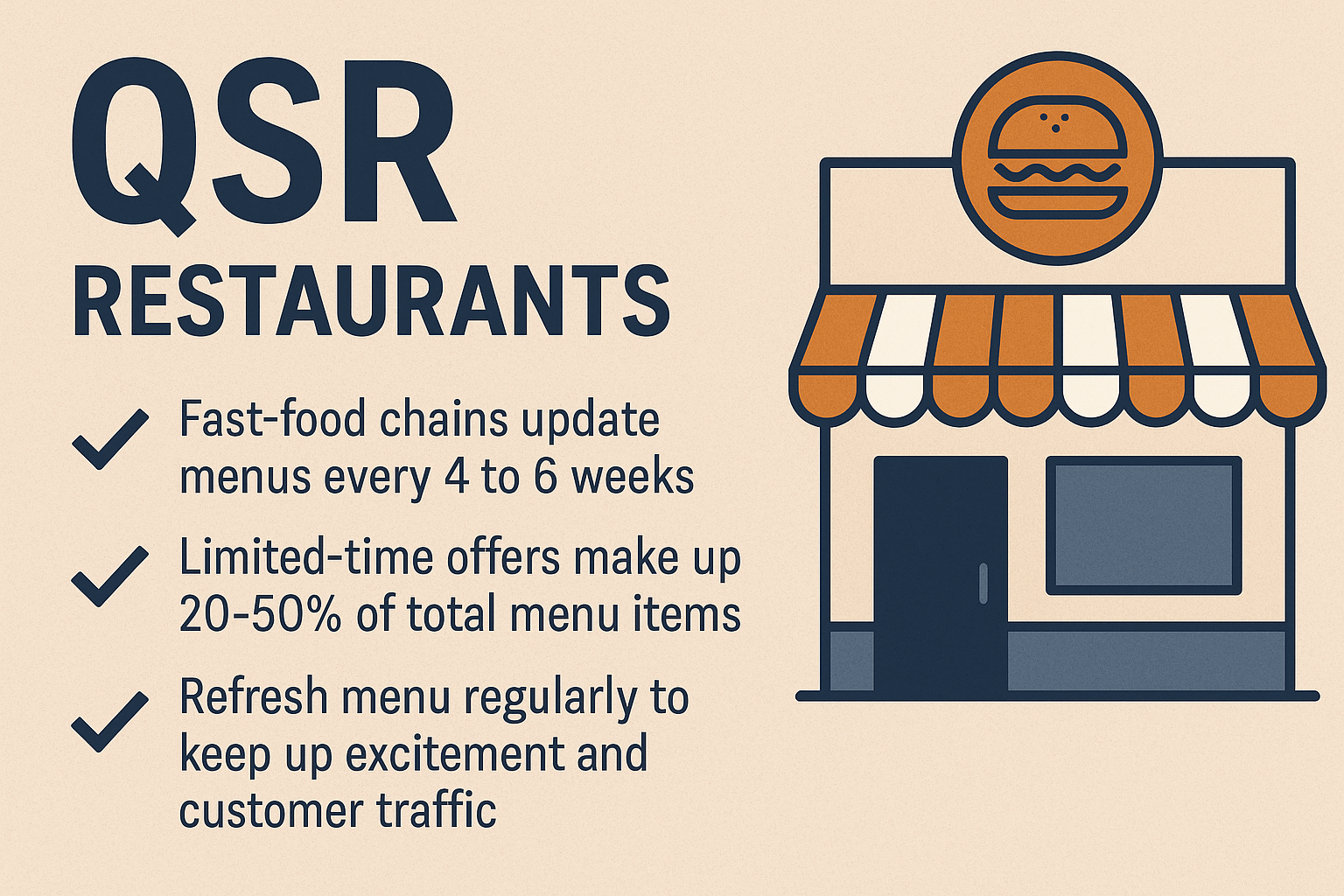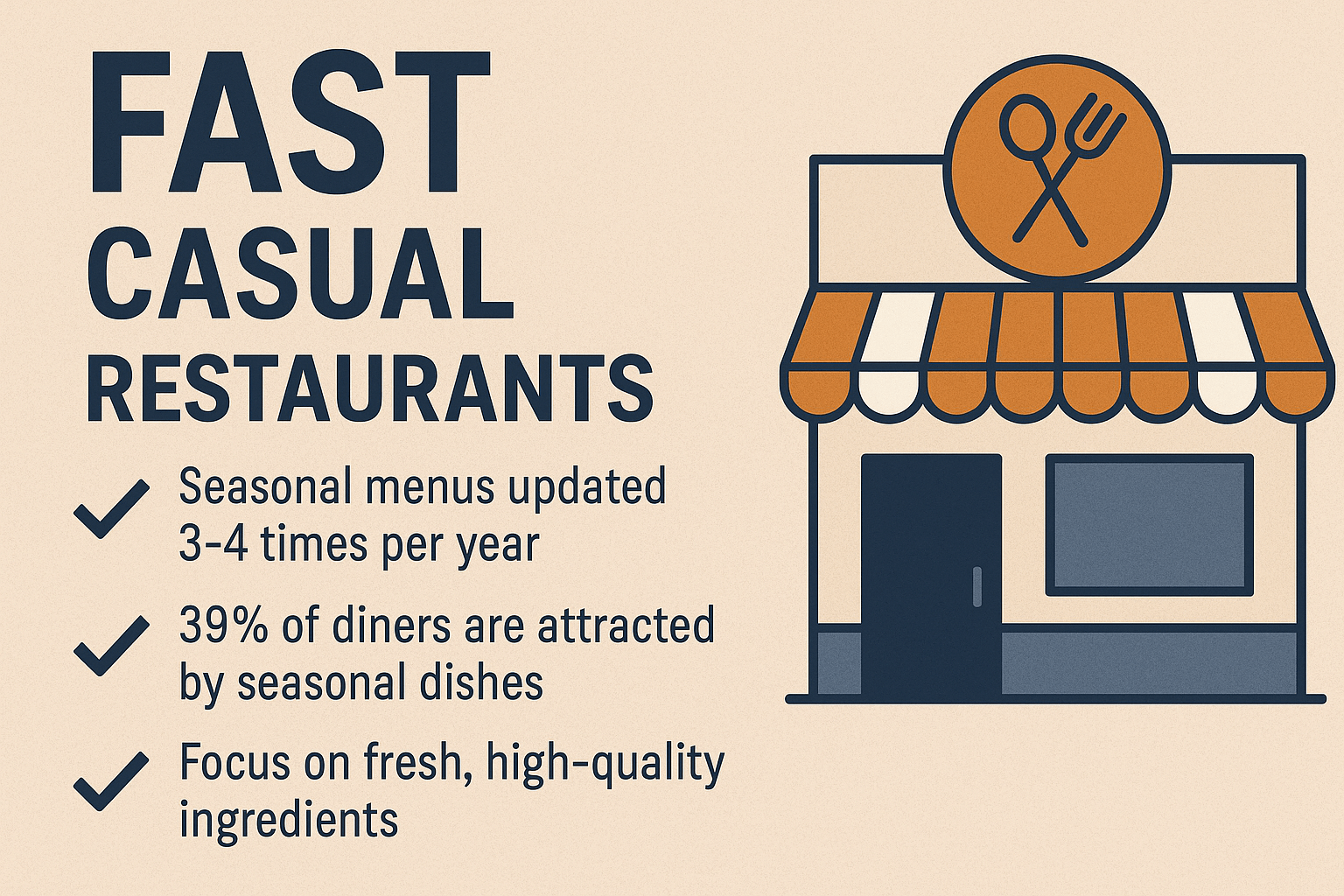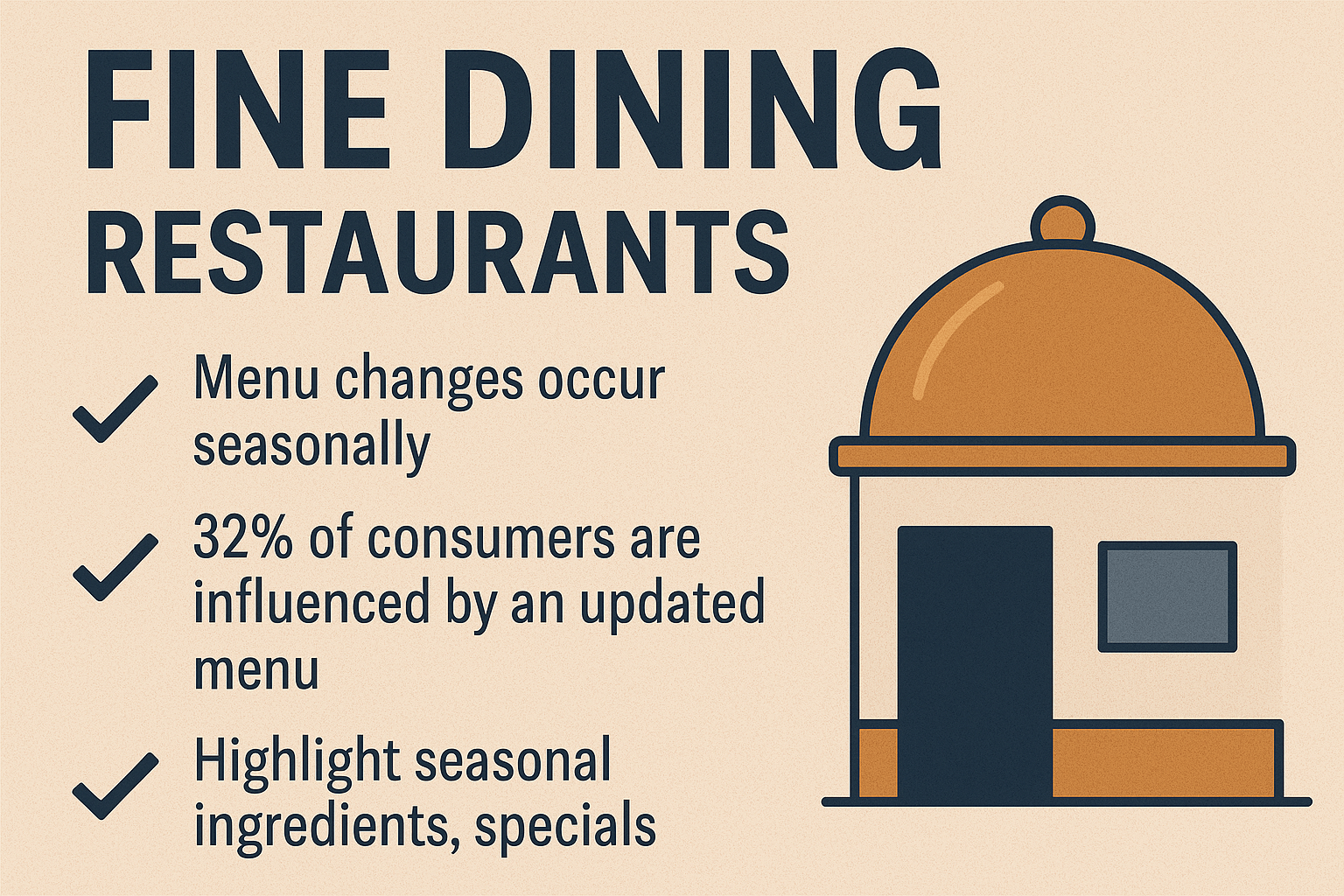Casual dining refers to sit-down restaurants with table service, often family-friendly or theme restaurants, as well as independent bistros and pubs. Examples range from chain restaurants like Applebee’s, Olive Garden, or Earls, to local eateries. These restaurants typically have printed menus and a broad selection of dishes from appetizers to desserts. Customers expect a comfortable, value-oriented dining experience.
How Often to Update: In casual dining, the **menu should be reviewed and updated at least 1-2 times per year, with a strong recommendation toward seasonal updates (twice or four times a year). Many casual dining restaurants introduce new menus or menu changes in the spring and fall, for instance, reflecting lighter fare for warmer weather and heartier options for colder months. Some chains go further and have quarterly special menus or limited-time features layered on top of their main menu.
Industry norms show that casual dining operators are very active in menu change efforts. In fact, 83% of casual dining restaurants reported changing their menu offerings in a recent year, often due to adjusting recipes, dealing with supply changes, or introducing seasonal items. This high percentage indicates that virtually every casual eatery is making at least some tweaks annually.
For a typical casual dining restaurant, a full menu revamp once a year is a minimum. But it’s often more effective to do smaller updates more frequently. For example, instead of one massive overhaul in January, you might do a spring menu refresh (adding some new salads, fresh fish, asparagus dishes), then another in autumn (introducing warming soups, pumpkin or squash-based recipes, etc.). This biannual cycle keeps the menu in sync with seasonal ingredients and gives regular guests something new to look forward to, without overwhelming your kitchen staff with constant changes.
Customer Expectations: Diners in this segment enjoy variety but also have favorite go-to items. Striking a balance is crucial. As one industry editor noted, diners now expect even casual chains to follow the seasons – offering fresh, seasonal favorites so they don’t feel the need to go elsewhere for those dishes. For example, a family restaurant that fails to offer any fresh corn, tomatoes, or peaches in the summer might be seen as out of touch. The best practice is to keep your “hits” constant but rotate in a handful of seasonal dishes. Even a large chain like IHOP, known for its classic pancakes, regularly launches seasonal specials to bring seasonal excitement.
Recommended Interval: Seasonally or at least twice a year. If resources allow, a quarterly update (four times a year) can be ideal – it aligns with the seasons neatly. However, many casual dining establishments find a twice-a-year update (spring/summer and fall/winter) more manageable operationally. For independent restaurants, consider printing seasonal inserts for your menu or having a seasonal specials chalkboard, so you can change offerings without reprinting the entire menu constantly.









